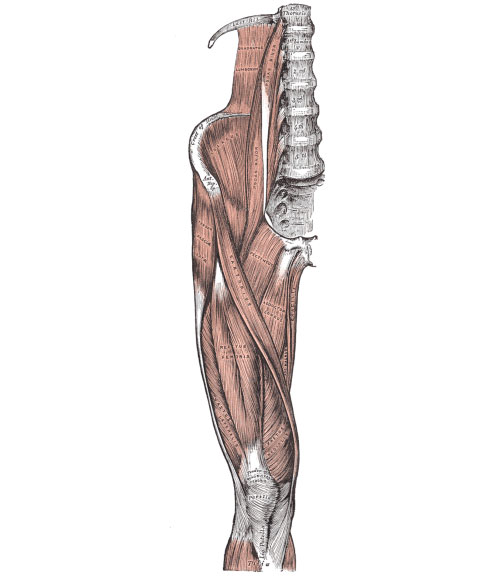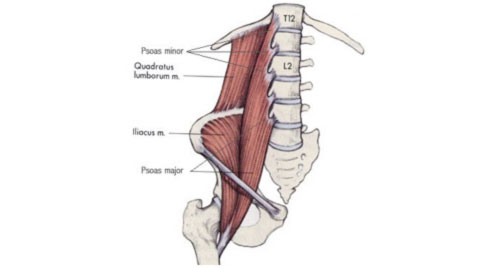 |
For more information call
The Wellington Hospital: 020 7483 5589
Fortius Clinic: 0845 853 1000 The Yorkshire Clinic: 01274 621600 |
Psoas Tendinitis and Snapping Psoas
Snapping hip syndrome (Coxa saltans)
Snapping hip syndrome is a condition characterised by a snapping sensation when the hip is moved. The anatomical structures that are usually causing the audible clunk are the Iliotibial band and the psoas tendon. Both of these types are extra-articular, which means that these structures are lying outside the joint capsule.

(Figure demonstrating the anterior muscles of the thigh)
(Figure demonstrating where the psoas tendon runs of the rim of the acetabulum.)
Snapping Iliopsoas tendon
The medial type of snapping hip occurs when the Ilio psoas tendon moves from lateral to medial over the iliopectineal eminence.
Snapping or clunking of the Iliopsoas can occur when the hip is brought from a flexed and abducted position (frog leg position) to extension and is usually asymptomatic. When the snapping is painful, Iliopsoas tendinitis is a cause of anterior hip pain.
Psoas tendinitis can occur
- Following an acute injury
- Sports related
- Associated with femoro acetabular impingement.
- After total hip replacement
- After hip arthroscopy
The diagnosis can be made with clinical examination, but it is important to exclude an intra-articular cause of the snapping. An MRI arthrogram can be performed with a local anaesthetic. A local anaesthetic injected in the joint should usually not affect the psoas symptoms. Ultrasound can be used to assess the tendon of the Iliopsoas and to inject a local anesthetic in the psoas bursa for diagnostic pain relief.
Ultrasound guided injections are more effective for psoas tendinitis following total hip replacement than with idiopathic tendinitis.
When the symptoms are resistant to physical therapy, a psoas tenotomy or lengthening can improve the pain symptoms. For the experienced hip arthroscopist this is a relatively easy procedure.
